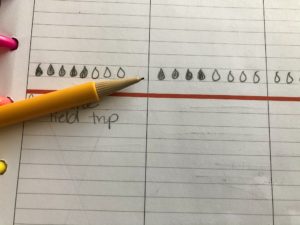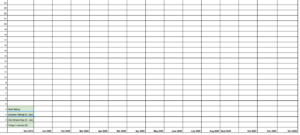My students spend so much time talking! I’ve tried rewards, I’ve tried consequences, I’ve been clear with my expectations. So far, nothing has worked. What do I do to get my students to stop talking and start working?
Aaaah. The age-old question asked by teachers of preteens everywhere: How do I get them to stop talking!?
The most difficult part of this issue is that I think we really need to challenge the assumptions within the question itself. And truly, I get it. My fifth graders could talk like it was their JOB. But this is the nature of their development, and if we’re going to build relationships with them and help them learn, we’ve got to find a way to embrace who they are.
As a person who talks to learn, I absolutely understand the need to talk in class! If you put me in a room with a book, I’ll enjoy myself. If you let me hang out with others who loved that book and will discuss it passionately for hours, I will discover more about the book, others, myself, and possibly life itself than you ever thought imaginable.
So how can we embrace the preteen chatter and bring the learning to a developmentally appropriate place? I believe the best way is to build in opportunities for communication whenever possible and help students see the value in what they are doing.
Here are a few things that work for me:
Modeling
Full disclosure: This is sometimes really challenging! At the beginning of the year, it’s easier to remember to wave to a colleague and find another time to ask my quick question, because I remember that the students are looking to me for leadership. When the holidays approach and I’m exhausted, I can sometimes forget. It’s in the moments when my students are misbehaving that I find I need to look inward.
Almost every time, I have been the one to slip up as much as they have (if not more!). When I realize it, I own it, apologize for my mistake (even though they did the same thing – after all, I am the adult!), and ask if we can all return to the appropriate procedure. In third and fourth grade, students are often happy to hold me accountable. Fifth graders (and up) are less likely to care about holding me accountable, but they definitely appreciate my willingness to own my mistakes. I’ve also found they’re more likely to work with me if I hold myself to the same standard I’m holding them to (and after all, isn’t that only fair?).
Mini Lessons
Whenever possible, I keep my teacher talk and direct instruction to fifteen minutes or less, and that time ideally includes at least one opportunity to turn and talk. Reading and Writing Workshop are great for this! When appropriate, the workshop model is also a huge asset in math. I’ve found particular success when the topic is one where student ability levels vary.
Constructivism
In both math and science, helping students construct their own understanding can be a powerful learning tool. I may pose a question to start the lesson, and students then take responsibility for discovering the answer. With this model, the closing reflection is key to be sure students’ understandings are accurate. The 5E model is also helpful in science.
Student Goal Setting
My students and I set goals at the beginning of the year, and we create a plan to achieve them. I share my teaching goals and let students see when I’m trying new things. Each person in the classroom talks with an accountability partner about their goals, and we spend a few minutes every week or two talking about how things are going. Students give each other advice, encourage each other, and learn to hold each other accountable in a kind, productive way. When we have free time, students work toward their individual goals, and we have whole class celebrations when they achieve them, if the student is comfortable with it. This builds in time for talking that is productive and helps students learn how to set goals and support others.
Explain Why
At the beginning of the year, I teach my students to ask why we’re doing something if I haven’t explained it adequately. There is a purpose to everything, and I want them to have a clear understanding of the reasons behind each assignment and how it relates to their individual goals.
As a student, I did not memorize my multiplication tables. The purpose of doing so was completely lost on me. (Yes, I was the student who could do the task… I just wouldn’t without a good reason.) In fact, I managed to get through my entire academic career without knowing them. It wasn’t until I tried to throw a party in my 20s and was counting on my fingers in the grocery store that I realized why those facts were important. I memorized them with my first fourth grade class. It was the most embarrassing, humbling experience of my life. A few years later, a student asked me why we memorize facts, and I was finally brave enough to share the truth. Every single student in that class mastered their facts. It was incredible.
A few years later, one of my fifth graders had no interest in writing. I explained that writing was important in every job, and gave a few examples. Because I’d encouraged them to challenge me, he very politely explained that no one writes anything on the football field. There would be no need for writing in his chosen career. After a discussion of the importance of communicating with fans, reading and revising contracts, etc, he was happy to remain focused and created a wonderful story for younger football players. He just needed to understand why.
Boundaries & Procedures
I’d be remiss if I didn’t include this. Of course there are times when talking is simply inappropriate, and it’s our job to help students learn that. We practice the procedures for our classroom routines, and I am lovingly picky about how they are done. If we are chatting when we transition from mini lesson to work time, we simply try it again. No reason to start our work time if we’re not focused on what we’re doing. Sometimes, it’s just a matter of clearly, kindly naming what we want and practicing the procedure until students achieve it.
For me, the key to all of it is this: Know my students. Love them for exactly who they are. Believe that they can, and expect them to rise to the occasion. They always do.







